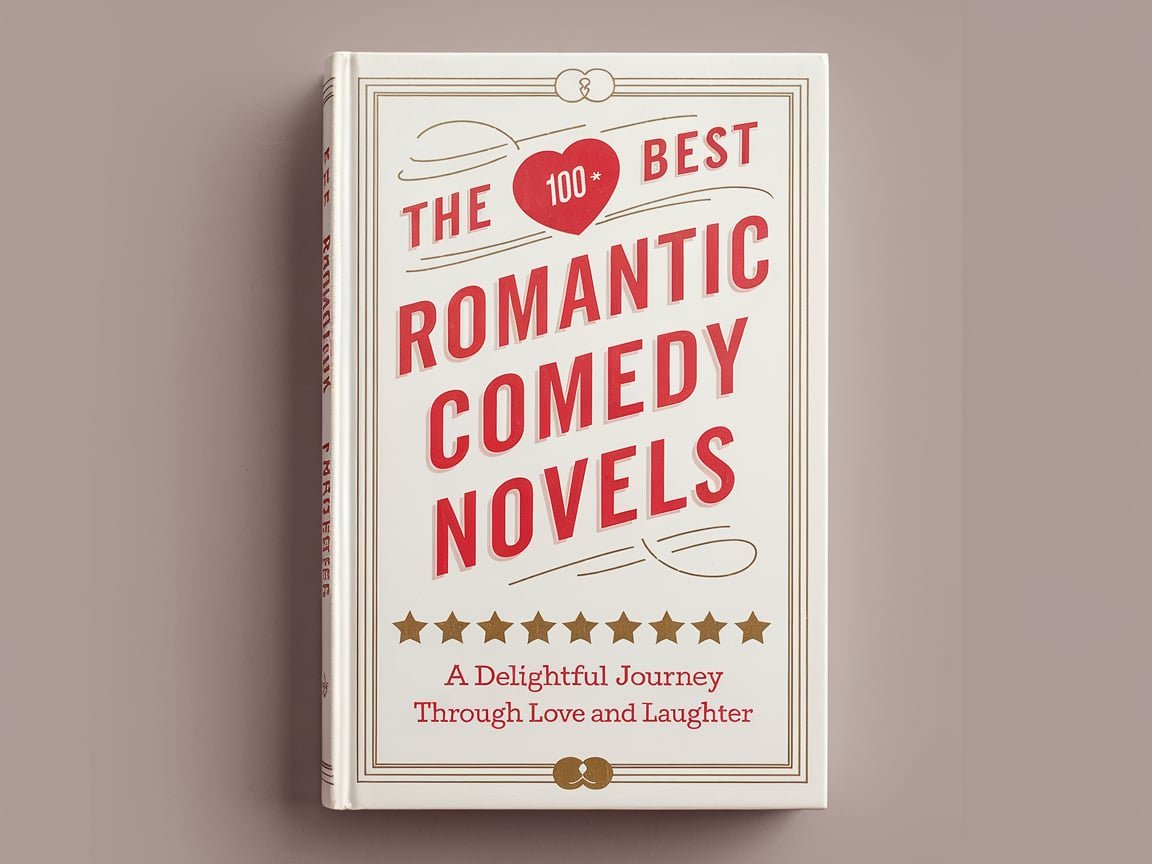Introduction to Better Than the Movies

‘Better Than the Movies’ by Lynn Painter is a contemporary young adult novel that has been creating quite a buzz since its release. Published in May 2021, this novel belongs to the romance genre and perfectly encapsulates the trials and tribulations of teenage life and first love. The story explores themes of friendship, personal growth, and the importance of challenging one’s own perceptions. Its charming and relatable characters make it an engaging read for teenagers and adults alike.
The book has garnered attention for its witty writing, endearing narrative, and well-developed characters. Initially, it received positive reviews from both critics and readers, lauding it for its heartwarming and humorous storytelling. The protagonist, Liz Buxbaum, navigates the complex world of high school with wit and resilience, making her a relatable character for many readers. Her journey is not just about romance but also about self-discovery and the intricacies of relationships.
One of the reasons ‘Better Than the Movies’ is gaining popularity is its fresh take on the romantic comedy genre, blending the charm of classic rom-coms with contemporary issues faced by today’s youth. Critics have praised Painter’s ability to create a narrative that feels both nostalgic and modern. Readers have been captivated by the book’s ability to balance lighthearted romance with deeper themes, making it a compelling read for a broad audience.
As we delve deeper into the characteristics that make ‘Better Than the Movies’ stand out, it becomes evident why it has struck a chord with so many. From its delightful humor to its profound insights, Lynn Painter’s novel promises an experience that is—you guessed it—better than the movie.
Meet the Author: Lynn Painter
Lynn Painter, a rising star in contemporary young adult fiction, has quickly captured readers’ imaginations with her engaging storytelling and relatable characters. Painter initially embarked on her writing journey as a hobbyist, crafting short stories and fanfiction that gradually garnered a dedicated following. After realizing her passion could extend into a professional career, she transitioned into the world of published novels, where her unique voice found resonance with a wider audience.
Painter’s literary repertoire prior to “Better Than the Movies” includes the well-received “The Love List” series, which delves into the complexities of teenage relationships and self-discovery. It’s evident that Painter’s own experiences often permeate her work, pulling from her Midwestern upbringing and personal encounters. This authenticity shines through, making her characters deeply rooted in reality, even as they navigate fictional scenarios.
One of the hallmarks of Painter’s writing is her adeptness at blending humor with poignant moments. She has cited classic rom-coms and authors like Sophie Kinsella as significant influences, shaping her approach to merging light-hearted banter with emotional depth. This style has endeared her to readers looking for narratives that entertain and resonate on a profound level.
Interestingly, a lesser-known anecdote about Painter involves her unconventional method of overcoming writer’s block. She reportedly turns to music from the 90s to rekindle her creativity and frequently credits this nostalgic dive as a catalyst for some of her most memorable scenes. Beyond her professional life, Painter is an advocate for young writers, frequently participating in workshops and literary festivals to inspire the next generation of storytellers.
By understanding Lynn Painter’s background and creative journey, readers gain greater insight into the narrative style and emotionally rich storytelling found within “Better Than the Movies.” Her ability to craft poignant yet amusing tales continues to capture hearts, proving that her novels often feel, as many readers describe, better than the movie adaptations they so vividly evoke.
Plot Summary

Lynn Painter’s “Better Than the Movies” artfully balances romance and humor by delving into the intricacies of young love and self-discovery. The narrative unfolds through the eyes of Liz Buxbaum, a quirky and endearing teenager with a penchant for vintage romantic comedies. Driven by her lifelong dream of experiencing a love story that’s better than the movies, Liz finds herself entangled in an unexpected quest to capture the heart of her school crush, Michael Young. But things take an interesting turn when she enlists the help of her charming yet infuriating neighbor, Wes Bennett, to win Michael over.
The story is set in the quaint suburban town of Willow Springs, a place that mirrors the whimsical backdrop of Liz’s favorite films. The high school environment, with its lockers and hallways, serves as a microcosm of teenage life, where friendships are tested, and first loves blossom. Liz’s relationship with Wes begins as a reluctant partnership with a clear goal: to orchestrate moments that might draw Michael’s attention. However, as the plot progresses, readers will witness the nuanced and often hilarious evolution of Liz and Wes’s dynamic.
Central to the storyline are Liz’s internal struggles and growth. Her journey is characterized by bouts of self-doubt, comedic missteps, and moments of genuine revelation. Themes of identity, family ties, and personal aspirations are woven into the narrative, offering depth to what initially appears to be a straightforward romantic comedy. Liz’s relationship with her late mother, who shared her love for classic romances, adds an emotional layer that resonates throughout the book.
Major events in the narrative include school dances, prom preparations, and heartfelt conversations under starlit skies. These picturesque moments encapsulate the essence of what Liz seeks—a love story that transcends reality, akin to those she cherishes in her movie collection. Yet, as the story unravels, Liz learns that sometimes, the unscripted moments, the ones that aren’t picture-perfect, can be just as endearing and, perhaps, better than the movies.
Themes and Motifs
‘Better Than the Movies’ by Lynn Painter intricately weaves several central themes and motifs that resonate with readers. Among these, romance stands as a focal point. The narrative envelops its characters in a charming love story that highlights the unpredictability and often serendipitous nature of romantic relationships. Throughout the book, Liz, the protagonist, navigates her feelings for her childhood crush Michael, and her evolving relationship with her next-door neighbor Wes. This contrasting dynamic between expectation and reality forms the backbone of the romance theme.
Another predominant theme is personal growth. Liz’s journey is not just about finding love but also about self-discovery and growth. The narrative takes us through her dealing with the grief of losing her mother, adjusting to her father’s new relationship, and ultimately realizing the importance of genuine connection over superficial desires. Painter masterfully blends these experiences to show how Liz matures emotionally and learns to appreciate the imperfections in both herself and others.
The influence of media on our perceptions of life and love is yet another nuanced theme. ‘Better Than the Movies’ holds a mirror to how films and media shape our expectations of romance and life events. Liz’s obsession with romantic comedies often leads her to unrealistic expectations, clouding her judgment and causing constant comparisons between life and cinematic portrayals. Through Liz’s realizations and mishaps, the book emphasizes the disparity between real-life relationships and their idealized versions as depicted in movies.
Painter strategically employs motifs such as classic rom-com tropes, soundtracked moments, and heartfelt letters to enhance these themes and ground the narrative in relatable experiences. These elements not only pay homage to the romantic comedy genre but also offer a critical commentary on how these tropes impact our own lives and loves. Through these themes and motifs, ‘Better Than the Movies’ becomes more than just a love story; it is a reflection on personal growth and the often misleading expectations set by media, making it deeply relatable and, arguably, better than the movie.
Character Analysis

“Better Than the Movies” by Lynn Painter is lauded for its rich character development, which plays a crucial role in making the novel memorable and engaging. At the heart of the story is Liz Buxbaum, an endearing protagonist whose journey from dreamer to a more self-assured individual forms the crux of the narrative. Liz is defined by her love of romantic comedies and her unyielding belief that her life should parallel the perfect romance she sees on screen. Her character arc revolves around this idealism and the eventual realization that real-life love stories often diverge from cinematic portrayals.
Wes Bennett, Liz’s neighbor and unexpected romantic interest, serves as a pivotal figure in Liz’s transformation. Initially painted as a nuisance, Wes’s character evolves, revealing layers of complexity that challenge Liz’s preconceived notions of romance and companionship. Their interactions are marked by playful banter and gradual mutual understanding, which subtly yet effectively convey the theme of looking beyond surface impressions.
Beyond the main characters, the supporting cast significantly enriches the storyline. Helena, Liz’s best friend, provides a grounded counterpoint to Liz’s whimsical daydreaming, often serving as her anchor to reality. Meanwhile, the enigmatic Michael, Liz’s long-time crush, contrasts sharply with Wes, highlighting different facets of Liz’s desires and expectations.
Character growth is a crucial element in this novel. Liz’s journey from seeing Wes as simply a thorn in her side to recognizing his genuine qualities signifies a broader understanding of love’s true nature—messy, unpredictable, and often “better than the movie.” This metamorphosis not only underlines her personal development but also encapsulates a key theme of the story: the importance of embracing imperfections and unexpected turns in one’s pursuit of happiness.
Overall, the characters’ relationships and dynamic interactions are at the core of “Better Than the Movies,” making it a resonant and heartwarming read. Their growth is intricately tied to the narrative’s exploration of love, friendship, and self-discovery, resulting in a nuanced portrayal that justifies the book’s acclaim and widespread appeal.
Writing Style and Narrative Techniques
Lynn Painter’s writing style in ‘Better Than the Movies’ is both engaging and relatable, making it a standout within its genre. Her use of language is contemporary and accessible, which resonates well with the target young adult audience. Painter employs a conversational tone, infusing humor and wit into the narrative, which not only lightens the mood but provides depth to the characters and their interactions.
The dialogue in ‘Better Than the Movies’ is particularly noteworthy. Painter excels at creating authentic conversations that mirror real-life interactions. This skillful craft in dialogue allows characters to organically reveal their personality traits, emotions, and growth throughout the narrative. The banter between characters is fresh and dynamic, further enhancing the book’s appeal by keeping readers engaged and entertained.
Humor is intricately woven into Painter’s storytelling, serving as a subtle yet powerful tool to address heavier themes and character development. This balance of light-heartedness with more serious undertones helps in maintaining a compelling narrative flow. Painter’s comedic timing adds a layer of charm to the story, often evoking genuine laughter, which, in turn, amplifies the overall reading experience.
In terms of pacing, Painter demonstrates a strong command over the narrative structure. The story unfolds at a balanced pace, ensuring that every scene adds value to the progression without overstretching or condensing crucial moments. Her ability to maintain momentum while diving into character backgrounds and evolving plotlines is a testament to her narrative prowess.
When compared to other works within the same genre, Painter’s techniques set a high bar. Her intuitive understanding of how to blend humor with a heartfelt story distinguishes ‘Better Than the Movies’ from its counterparts. This seamless integration of various narrative elements showcases her strength as a writer, offering a reading experience that is indeed ‘better than the movie’ adaptations often sought after by readers.
Critical Reception and Reader Reviews

“Better Than the Movies” by Lynn Painter has garnered a mixed array of reviews and critical perspectives, reflecting its varying impact on readers and critics alike. On one hand, the novel has been celebrated for its engaging narrative, relatable characters, and charming romantic plot. Critics have particularly praised Painter’s ability to blend humor with heartfelt moments, effectively creating a story that resonates with young adults and adults alike. The conversational writing style and witty dialogues have been highlighted as key elements that make the book not just readable, but thoroughly enjoyable.
Several reader reviews echo these sentiments, often hailing the book as a delightful, feel-good read that ranks, for many, better than the movie adaptations of similar genres. Many readers appreciate the nuanced portrayal of the protagonist’s journey from adolescence to adulthood, which infuses a deeper level of personal growth and emotional maturity into the romantic narrative. It’s not surprising that “Better Than the Movies” has found a strong fanbase, with numerous readers recommending it for its warmth and humor.
However, the book is not without its detractors. Some readers and critics have expressed concerns about certain clichéd plot developments and predictable story arcs. A few have noted that while the characters are endearing, they occasionally fall into typical romantic comedy stereotypes. These critiques suggest that while the book aims to deliver a story that is better than the movie, it sometimes adheres too closely to familiar tropes.
In contemporary literature, “Better Than the Movies” has made a significant mark, even earning accolades for best young adult fiction. The book’s widespread appeal and critical acknowledgment underline its success in striking a chord with a diverse audience. It stands out not just for its romantic plot, but for its broader, more impactful exploration of themes like friendship, personal growth, and the poignant transition from youth to adulthood.
Conclusion and Personal Reflection
‘Better Than the Movies’ by Lynn Painter is undoubtedly a captivating read that transcends its genre, offering readers both entertainment and deeper emotional resonance. Upon completing the book, one cannot help but reflect on the rich tapestry of characters, intricate plot lines, and the poignant messages woven throughout the narrative. The witty dialogue and relatable protagonist make this book not just another romantic comedy but a story with heart and substance.
What truly sets ‘Better Than the Movies’ apart is its ability to evoke a range of emotions. It cleverly balances humor and sentimentality, drawing readers into a world that feels both familiar and refreshingly unique. Painter’s talent for creating realistic, multi-dimensional characters allows readers to see parts of themselves in the heroes and heroines of the story. This relatability is a key factor in the book’s broad appeal and enduring impact.
The exploration of themes such as love, loss, and self-discovery speaks to the universal human experience, making ‘Better Than the Movies’ much more than a simple love story. It’s a thoughtful, engaging piece that encourages readers to reflect on their own lives and relationships. In doing so, it leaves a lasting impression, positioning itself as a book that readers will return to time and time again.
For those who appreciate well-crafted stories with a blend of humor, romance, and profound insights, ‘Better Than the Movies’ is an excellent choice. Fans of contemporary romance will find it particularly delightful, but its universal themes ensure that it will resonate with a wider audience. Whether you’re seeking a light-hearted escape or a narrative that offers more than meets the eye, this book promises to deliver on all fronts. I highly recommend discovering ‘Better Than the Movies’ for yourself and experiencing the unique charm and wisdom it has to offer.





